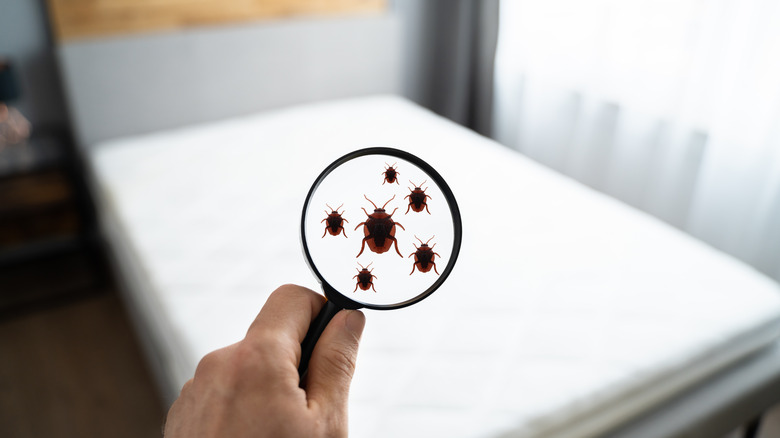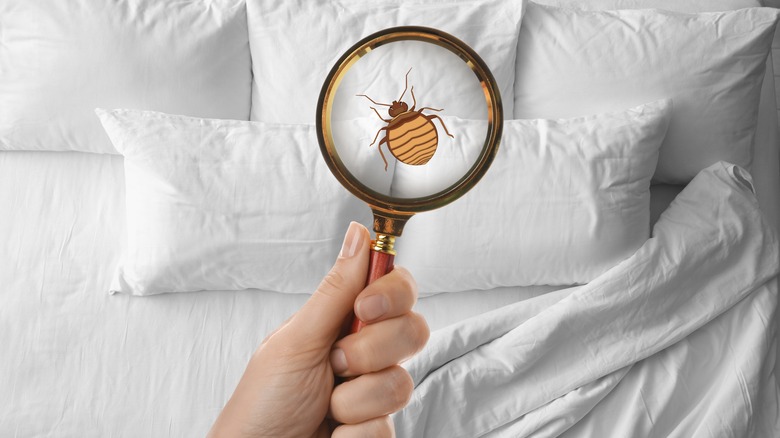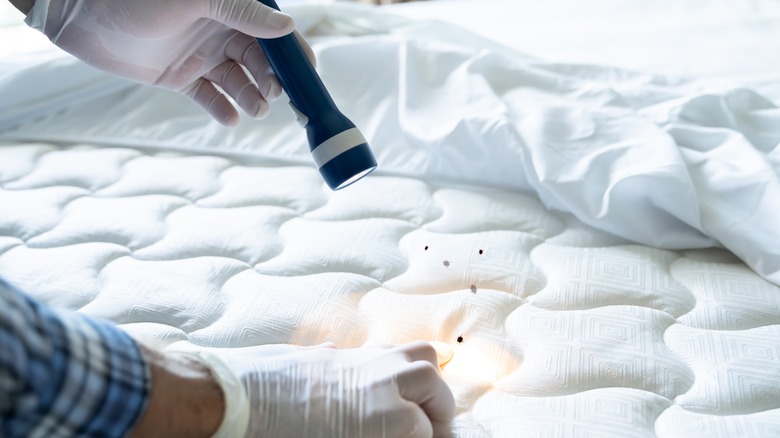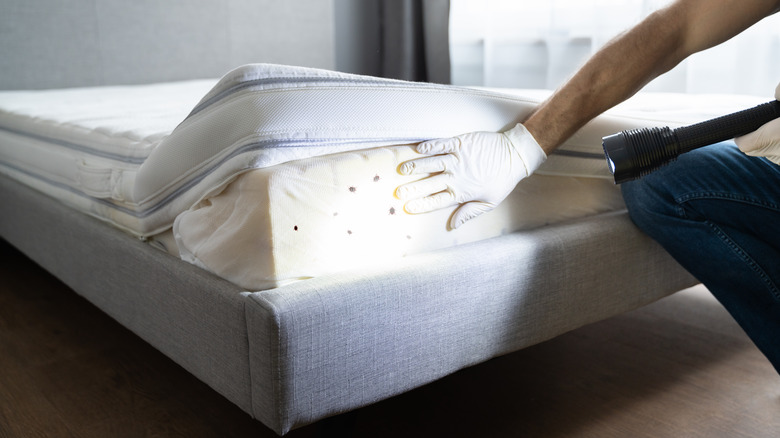How To Get Rid Of Bed Bugs Permanently, According To An Expert
Homeowners everywhere are scared out of their minds by the mere mention of bed bugs — largely because they are immensely difficult to eradicate once established in the home. Thankfully, the CDC reports that bed bugs are not known to carry disease themselves. However, they are incredibly annoying and can lead to multiple itchy patches on the body. A loss of sleep due to their presence can make a homeowner irritable and the scratching can lead to secondary infections through open lesions on the skin.
In an exclusive interview with House Digest, Tim Sherrer, a designated certified operator with Expest Exterminating, notes "a bed bug infestation is a homeowner's worst nightmare. Everyone wants to sleep in peace; no one wants bed bugs crawling in their bed and sucking their blood while they sleep, yuck!" Sherrer describes many of the causes of bed bug infestations and a few key pieces of information that homeowners should know to effectively rid their homes of these pests. "Unfortunately, more and more homeowners are encountering them. Fortunately, there are some simple practices you can follow to help reduce the likelihood of a bed bug infestation in your own home," he states.
How an infestation begins
Bed bugs appear as small black dots on your mattress or other furniture in your home. They prey on unsuspecting victims while they sleep and quickly grow in both individual size and group volume. There are several ways in which you can end up with an infestation. "Bed bugs can move between units in apartments and multi-unit complexes, but they must be transported into a house," says Sherrer.
He continues, saying, "these pests are almost always brought into your home either on your clothes or baggage from a place you have visited or stayed. They also can be brought in via second-hand furniture and bedding." This means that if you're not careful about the items you bring in, you might inadvertently invite bed bugs into your property, wreaking havoc on your lifestyle, health, and sleep.
Moreover, inspecting furniture and clothing with a keen eye isn't enough to completely remove the threat of bed bugs entering your home. They are tiny critters and incredibly adept at hiding. Sherrer notes: "Once infested items are moved into your house then the bugs quickly move into tiny cracks and crevices and wait until you are asleep at night to seek you out."
How to identify bed bugs
Identification is the first step to eradicating a bed bug problem. Bed bugs remain a problem that many people have never dealt with, meaning that they aren't something that the average homeowner will have seen before and, therefore, be able to accurately identify with much confidence. However, if you're suddenly itchy or noticing red marks on your skin, it's possible that you've been sleeping with bed bugs.
The first thing to do, according to Sherrer, is "Google pictures of bed bugs so you are familiar with their appearance. Inspect the mattress, box springs, and sheets in the seams, folds, and corners of the bed, especially when you are sleeping away from home." In addition, he suggests that you "inspect your arms and legs for small red whelps after sleeping; these could be bed bug bites." If you go away on vacation, he also suggests, "always inspect your luggage and bags for bed bugs before bringing them home." As a preventative measure, Sherrer advises to "launder all bedding and clothing regularly. Install encasements on your mattress to prevent bed bugs from nesting in folds of your mattress."
How to evict these pests permanently
Once an infestation has been found, it's important to act quickly. Eliminating these pests from your sleeping quarters — and your home more broadly — is a must. It's also a good idea to take preventative measures to ensure that bed bugs can't find a way into your home in the future. "Bed bugs are non-discriminatory and are found anywhere people sleep; however, being vigilant and proactive can prevent you from becoming their next meal," says Sherrer.
He notes that a few key practices that can make a significant impact on keeping these bloodsuckers at bay. "Vacuum regularly with a hose attachment all the corners of the bed, nightstand, and other items in the bedroom. Reduce clutter and unnecessary items in the space as well." This can help prevent egg laying and a future infestation of bed bugs. Sherrer also says that "diatomaceous earth can be used to treat the baseboards and cracks and crevices around the bed." "Finally," Sherrer notes: "Consult a pest control professional if you identify bed bugs in your home."



